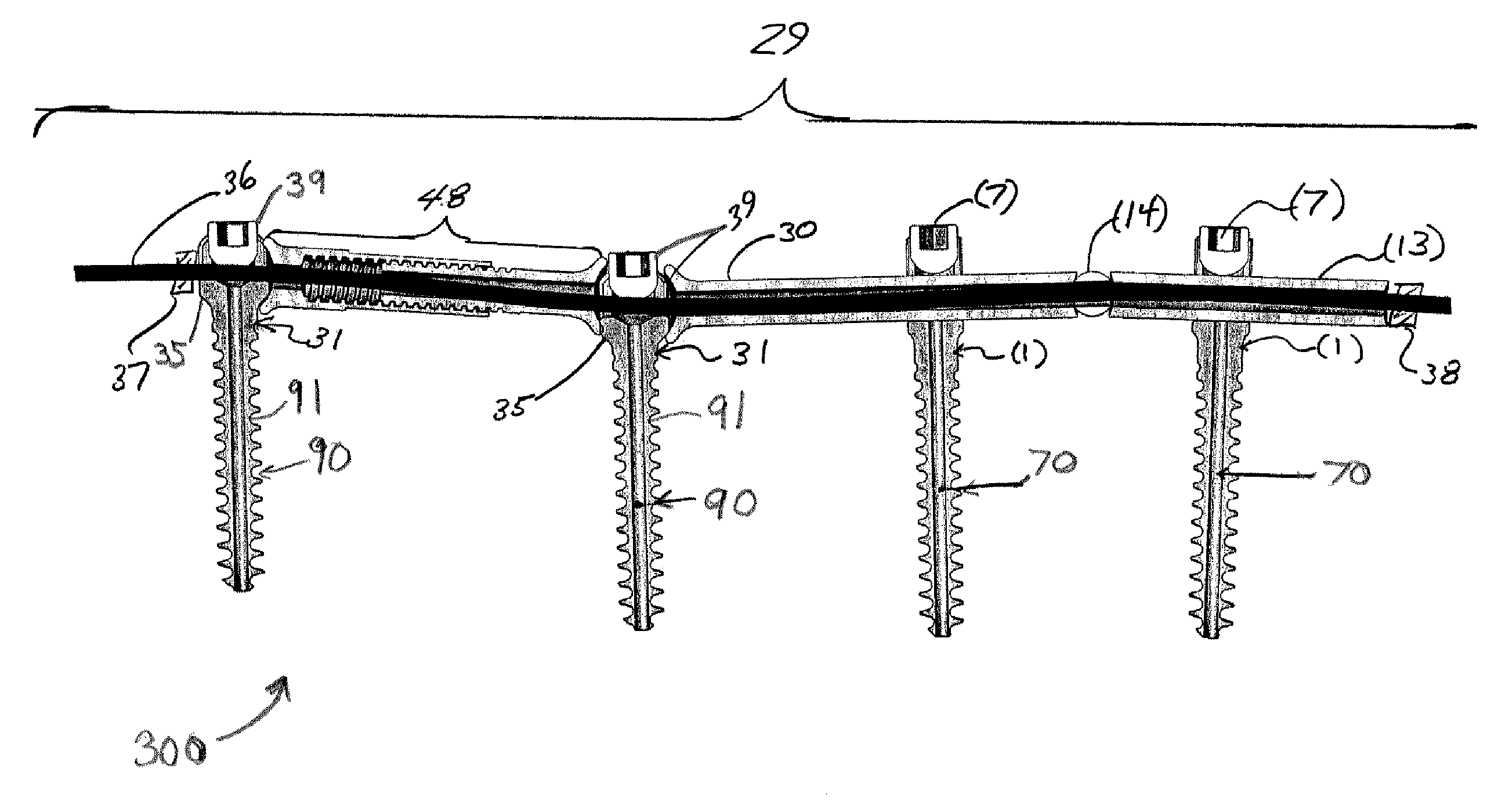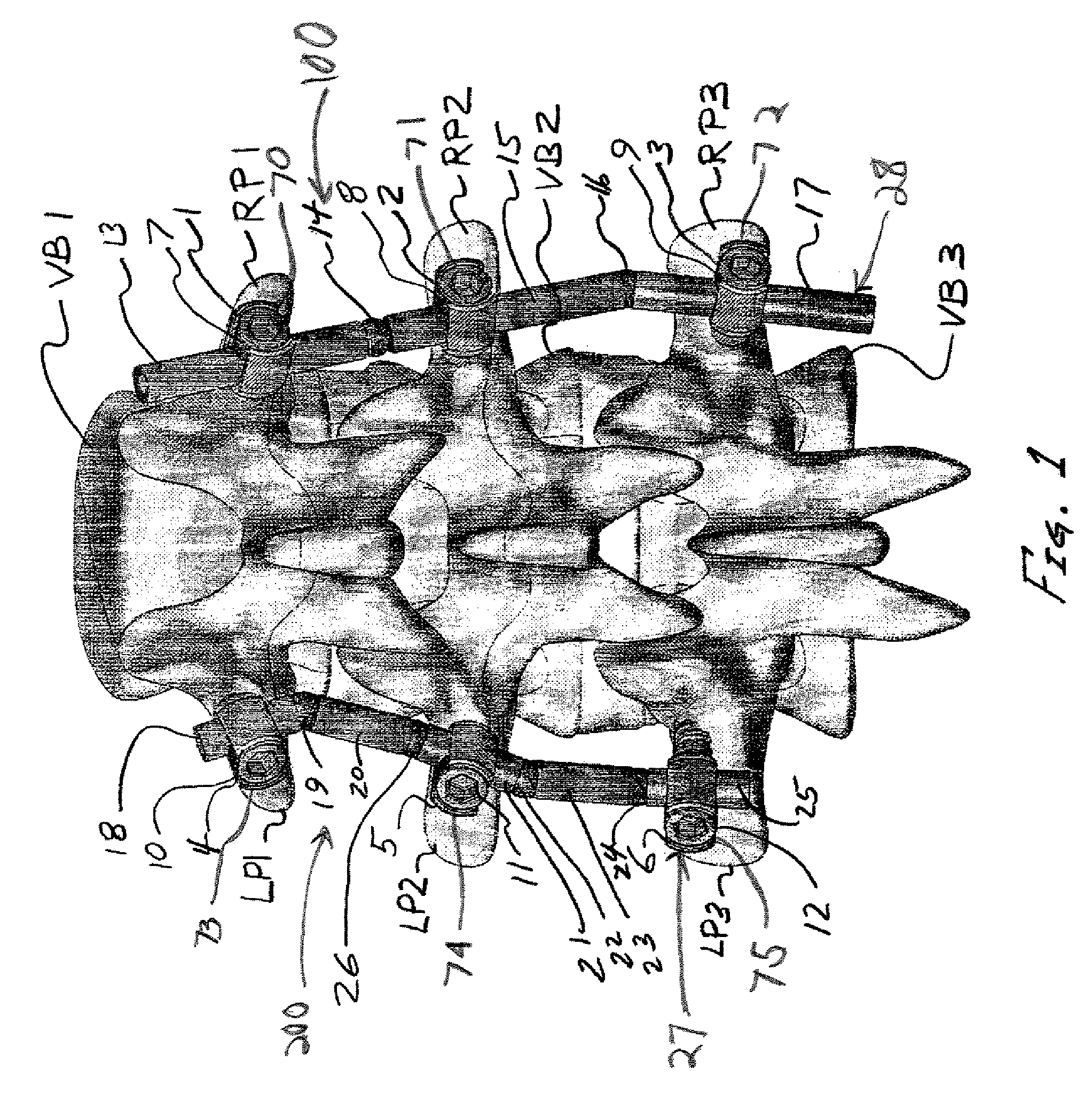Spinal Rod System
a spine and rod system technology, applied in the field of orthopaedic stabilization devices, can solve the problems of requiring surgical treatment, and affecting the stability of the spine, and achieves the effect of effective and adequate stabilization, simple installation and no risk of applying excessive for
- Summary
- Abstract
- Description
- Claims
- Application Information
AI Technical Summary
Benefits of technology
Problems solved by technology
Method used
Image
Examples
Embodiment Construction
[0054]Embodiments of the present invention will now be described with reference to the accompanying drawings. FIG. 1 shows spine stabilization systems according to the present invention installed in three vertebrae of a human spine. The systems shown in FIG. 1 are rigid fixation systems which permit little to no relative movement between the relevant vertebrae. The three vertebrae VB1, VB2, and VB3 have left pedicles LP1, LP2, and LP3 and right pedicles RP1, RP2, and RP3. Spine stabilization systems 100 and 200 include the rod assemblies 27 and 28 and are secured to vertebrae VB1, VB2, and VB3 by bone anchor assemblies 70, 71, 72, 73, 74, and 75. Rod assemblies 27 and 28 are made up of rod members 13, 15, 17, 18, 20, 21, 23, and 25, pivot members 14, 16, 19, 26, 22, and 24, and a tether (not shown in FIG. 1) in each of rod assemblies 27 and 28. The bone anchor assemblies 70, 71, 72, 73, 74, and 75 comprise anchor members 1, 2, 3, 4, 5, and 6 and screw top members 7, 8, 9, 10, 11, an...
PUM
 Login to View More
Login to View More Abstract
Description
Claims
Application Information
 Login to View More
Login to View More - R&D
- Intellectual Property
- Life Sciences
- Materials
- Tech Scout
- Unparalleled Data Quality
- Higher Quality Content
- 60% Fewer Hallucinations
Browse by: Latest US Patents, China's latest patents, Technical Efficacy Thesaurus, Application Domain, Technology Topic, Popular Technical Reports.
© 2025 PatSnap. All rights reserved.Legal|Privacy policy|Modern Slavery Act Transparency Statement|Sitemap|About US| Contact US: help@patsnap.com



